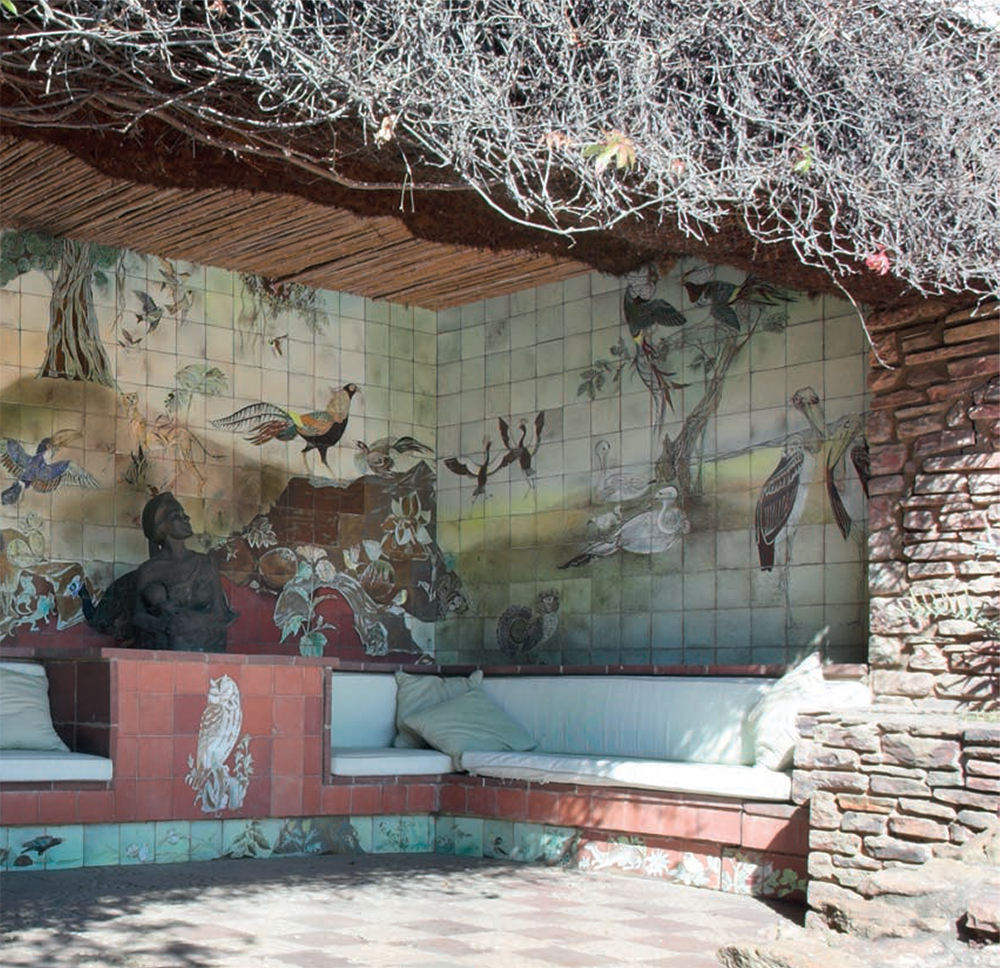For those of you who don’t already know, C-Library is our ever-expanding archive of the top eBooks, catalogs, and key texts in ceramics, from the past to the present. It is a fabulous resource for students, professors, collectors, and curators in our field looking to survey a particular gallery or artist’s legacy. With catalog essays by top critics and page after page of gorgeous high-resolution appearance, we like to think C-Library is even better than reading a physical book! Seriously! We want the ceramics community to review their very rich and diverse history, and today there are 95 (and counting!) publications in the library waiting to guide you in that journey.
Above Image: Lieberman Pottery and Tiles, 1955-present, courtesy of Wendy Gers
Each week, cfile.daily features a publication that has just been added to C-Library. This week we are sending gratitude to author Wendy Gers and South African publisher Jacana Media for allowing us to put Scorched Earth: 100 years of Southern African Potteries (2015) in our collection. If you are already a member, view the book, or begin your 30-day free trial today! 
Scorched Earth: 100 Years of Southern African Potters
Gers, Wendy
Auckland Park: Jacana Media, 2015
418 Pages
English
When colonists settled in the South African Cape in the 17th century, they were met with a lack of vessels to store, eat, and drink from. Once white clay was discovered on the Cape and deemed suitable for firing, two slaves were sent to be the settlement’s first brick and pottery producers. It was not until the onset of British rule, wherein many potters from Britain relocated to Southern Africa to meet the growing demand for tableware, that at least three industrial potteries were established. “As in the seventeenth century, South Africa was a pawn in the global economy, which was created and controlled by colonial powers,” explains Gers in her book. “The country was flooded with imported English domestic ware and the fortunes of local pottery operations waned.”
Eventually, toward the end of the second British occupation of South Africa, the mass importation of English pottery was reversed by a consistent supply from local South African potteries. That is where this book begins.
Gers’ book is a chronological anthology of potteries in Southern Africa. I say “anthology” rather than “list” or “glossary” because the author has selected the potteries she feels were most important in the Southern African tradition of industrial pottery. She excludes individual potters in order to focus on production pottery; a book on individual potters would be another endeavor entirely.
Beginning in 1908 with Transvaal Pottery, Gers outlines the location, founder, wares manufactured, as well as a brief history of the pottery. For many potteries, Gers has included a list of personnel: designers, potters, decorators, etc. who were employed by the pottery at a given time. And of course there are a great deal of images of each pottery’s dominant style, may it be decorative or functional.
Though Zulu and other tribal pottery (which is not production pottery) is left out of this book, (see Elizabeth Perrill’s Zulu Pottery in cfile.library), the chronological organization of this 418 page book, allows a reader to understand the natural way that African pottery fused with English and Dutch settlers’ pottery. Motifs and African iconography appear on British forms. Other times, white South African potters try their hand at the traditional Xhosa and Zulu Ukhamba beer drinking vessel form. One reason for this phenomena is that African potters more often than not held potter or decorator positions. Gers cleverly points to the way African potters influenced European potters and vice versa throughout the book.

Crescent Potteries, Free form terracotta vase with abstracted linear decoration, terracotta vase with sgraffitto marks, courtesy of Wendy Gers

Rorke’s Drift, Hand-built bowl with bird head handles, 1968-present, stoneware, photo courtesy of Wendy Gers
This week we are sending gratitude to author Wendy Gers and South African publisher Jacana Media for allowing us to put Scorched Earth: 100 years of Southern African Potteries (2015) in C-Library. If you are already a member, view the book, or begin your 30-day free trial today!



South African ceramists could be playing a vital role in the needs of water and sanitation, as well as clean cook stoves. The high temperature processes of ceramics are at the origin of industry and could industrialize developing countries. Sustainable developers are unaware of what can be produced in ceramics: energy optimized cook stoves, ceramic water filters, hygienic sanitary toilets; all are best practice. These can be manufactured locally, curtailing the need for imports; creating innumerable livelihoods.
Send us an email with your queries
I need help confirming the maker and origin of a porcelain teapot I recently obtained. It is marked on the bottom, as best I can determine, “STRUBENVALE.” It is in very good condition, and it looks fairly old. Thank you,
Larry
I’m looking for resources to help me identify a piece purchased in South Africa in 2005- I believe it’s ceramic- glazed bowl. It has a mark on the bottom- I have a photo if you know anyone I could contact.
Please could you send a picture of the piece to me, joshlawrence875@gmail.com.
Thanks
Regards Josh Lawrence
This article is worthy of recognition and comment. I found this material attention-grabbing and engrossing. This is well-scripted and highly informative. These views appeal to me. This is how real writing is done. Thank you.